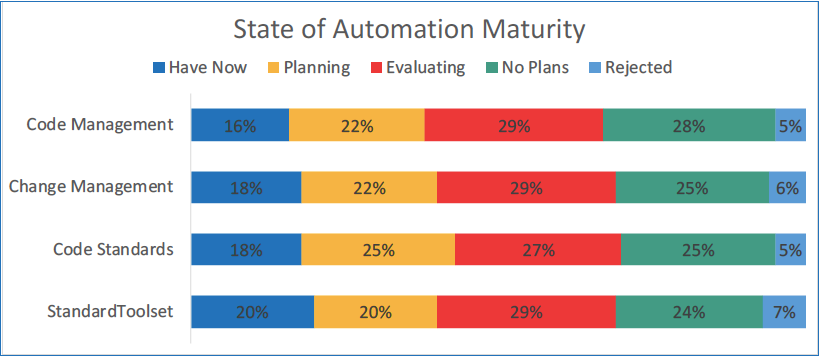No Time Like the Present for Network Automation
Nemertes Research
on
10 1 月, 2019


The time has come for IT to once again dive into the world of homegrown automation for running their networks.
Network teams have a love/hate relationship with automation, and have had for decades. Time after time, they have tentatively extended the reach of automation, working with everything from PERL scripts, CLIs, and screen scrapes to Python and proper APIs in an effort to reduce the tedium of managing the enterprise campus, WAN, and data center networks. When network teams find ways to waste less time on rote work, they make IT more responsive.
Time after time, though, something goes wrong with the cobbled together systems. Soon, rolling back and correcting mistakes or nursing along the automation as platforms and environments evolve takes more time and effort than is ultimately saved by using it. IT folks pull back and wait for better circumstances, tools, and platforms. Eventually they get some of what they want via new consoles and management tools that hide within them some of the automation IT sought. Then the cycle starts up anew.
Now, the confluence of several trends in IT has made it clear that it is automation time again. First and foremost, the focus on digital transformation has raised the profile of IT as a strategic differentiator once again. This has made it more crucial than ever that IT be able to drive innovative applications of technology—all of which rely on the network—successfully, and at speed. Transformative projects sometimes face only outward and affect mostly the data center network, but many others are focused on changes to the work environment, such as a deployment of new collaboration tools, or digital signage or some other new IOT system. Network teams therefore need to spend less time on “keep the lights on” operations across all networks and also be more effective and efficient in supporting new and strategic efforts.
Automation is key to answering both of those imperatives. Automation allows more effective management of existing networks by speeding execution of normal tasks, making execution more reliable and consistent, and making tracking and resolving errors more systematic and accountable. Automation also allows the changes required to support a new service to be pushed out rapidly, consistently, and accountably, across all segments of the network: DC, WAN, and campus.
To do these things, IT needs a network platform that can support robust automation. Ideally, as in a proper SDN model, there will be a controller that manages all the network components, and homegrown automation can work against that instead of having to work device by device as in a legacy environment. Being able to have a script tell a controller to push out a change in policy makes network automation both simpler and more reliable. (Automation can still be hugely useful in that legacy environment, but the challenges of automating effectively are larger and more complex.) (And, note the repetition of the cyclical pattern, with a lot of network automation hidden under the covers of the SDN controller!)
The other thing IT needs to make it work is a proper discipline and tool set for automating. That’s where one of the other big trends comes into play: DevOps. DevOps focuses on delivering reliable development at high speed, and relies on some key concepts, practices, and tools that are relevant to automation in network operations. Applying the thinking, practices, and toolset to the enterprise campus network and the WAN is simply the next step in embracing the DevOps approach as a key enabler of digital transformation.
Conceptually, DevOps brings the idea of “infrastructure as code” to the fore, a natural fit for an SDN environment. Practically, it brings with it good environmental management practices like code management for, and change management on, homegrown code for network management. Both were very rare as little as 3 years ago, both are rapidly becoming the norm. It also brings good coding practices like defining a set of standard development tools (e.g. Ansible or Salt, Puppet or Chef, etc.) and languages, and a set of common coding practices, all aimed at making it easier for staff to back each other up and pick up each other’s work smoothly.

This latest iteration of network automation looks to be the one that sticks, finally driving DIY automation into the heart of network operations for the long term. All it will take is the replacement of automation-unfriendly infrastructures as they age out of service, a whole-hearted embrace of SDN and infrastructure-as-code, and some time for those who have been burned so many times before to see and seize the moment.
About Nemertes: Nemertes is a global research-based advisory and consulting firm that analyzes the business value of emerging technologies. Since 2002, we have provided strategic recommendations based on data-driven operational and business metrics to help organizations deliver successful technology transformation to employees and customers. Simply put: Nemertes’ better data helps clients make better decisions.
©Nemertes Research 2019 • www.nemertes.com • 888-241-2685 • DN7491
- Category: Uncategorized
- Tag: automation, IT, Networking, SDN
